Prism Post
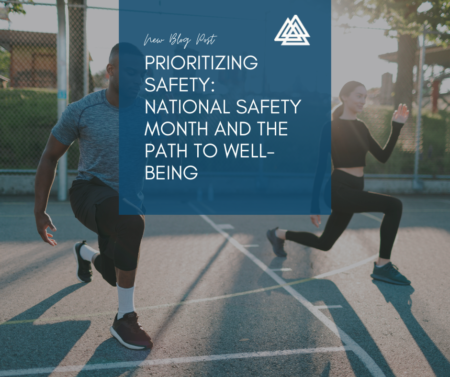 June is National Safety Month, a time dedicated to highlighting the importance of safety in our daily lives. Initiated by the National Safety Council, this month-long observance aims to raise awareness about the leading causes of preventable injuries and deaths and to promote safety practices at home, work, and in our communities. By prioritizing safety, we pave the way to a healthier, more secure, and overall well-being for everyone.
June is National Safety Month, a time dedicated to highlighting the importance of safety in our daily lives. Initiated by the National Safety Council, this month-long observance aims to raise awareness about the leading causes of preventable injuries and deaths and to promote safety practices at home, work, and in our communities. By prioritizing safety, we pave the way to a healthier, more secure, and overall well-being for everyone.
Understanding National Safety Month
National Safety Month is not just about reducing accidents; it’s about fostering a culture of safety that permeates every aspect of our lives. The focus areas often include:
- Workplace Safety
- Road Safety
- Home Safety
- Community Safety
Each week of June typically highlights different safety themes, encouraging us to take proactive steps in preventing injuries and ensuring the well-being of ourselves and those around us.
Workplace Safety
Workplace injuries and illnesses can have severe consequences for employees and employers alike. Creating a safe working environment is essential for productivity and morale. Key strategies include:
- Ergonomic Improvements: Adjust workstations to reduce strain and prevent musculoskeletal disorders.
- Safety Training: Regularly train employees on safety protocols, emergency procedures, and the proper use of equipment.
- Protective Gear: Ensure that all employees have access to and use appropriate personal protective equipment (PPE).
- Safety Audits: Conduct regular inspections and audits to identify and mitigate potential hazards.
Road Safety
Road safety is a critical concern, with traffic accidents being a leading cause of injuries and fatalities worldwide. Enhancing road safety can be achieved through:
- Defensive Driving Courses: Encourage drivers to take courses that teach defensive driving techniques and accident prevention.
- Regular Vehicle Maintenance: Ensure that vehicles are regularly serviced and maintained to prevent breakdowns and accidents.
- Safe Driving Practices: Promote the use of seat belts, avoiding distractions (such as texting), and adhering to speed limits.
- Awareness Campaigns: Support campaigns that raise awareness about the dangers of drunk driving and driving under the influence of substances.
Home Safety
Our homes should be our sanctuaries, but they can also harbor hidden dangers. Simple measures can significantly enhance home safety:
- Fire Safety: Install smoke detectors, maintain fire extinguishers, and create an emergency evacuation plan.
- Fall Prevention: Remove tripping hazards, install grab bars in bathrooms, and ensure proper lighting in all areas.
- Childproofing: For families with young children, use safety gates, cabinet locks, and outlet covers to prevent accidents.
- Poison Control: Store chemicals, medications, and cleaning supplies out of reach of children and pets.
Community Safety
Community safety encompasses a broad range of issues, from public health to emergency preparedness. Strengthening community safety can involve:
- Neighborhood Watch Programs: Participate in or start a neighborhood watch program to keep an eye on each other’s properties and report suspicious activities.
- Disaster Preparedness: Educate community members on how to prepare for natural disasters, including creating emergency kits and evacuation plans.
- Public Health Initiatives: Support public health campaigns that promote vaccinations, disease prevention, and healthy living.
- Safe Public Spaces: Advocate for well-lit, clean, and safe public spaces for recreation and social activities.
The Path to Well-Being
Prioritizing safety is more than just preventing accidents; it’s about creating environments where people can thrive without fear of harm. A commitment to safety nurtures a sense of security and well-being, allowing individuals to focus on living healthier, happier lives.
Here are some tips for integrating safety into your daily routine:
- Stay Informed: Keep up-to-date with the latest safety guidelines and best practices from reputable sources.
- Lead by Example: Model safe behavior for those around you, whether at home, work, or in your community.
- Engage and Educate: Share safety knowledge with family, friends, and colleagues to foster a collective commitment to safety.
- Be Proactive: Regularly assess your environment for potential hazards and take steps to address them before accidents occur.
National Safety Month is a reminder that safety is a continuous journey that requires vigilance, education, and proactive measures. By prioritizing safety, we not only protect ourselves and our loved ones but also contribute to a culture of well-being and security. This June, take the time to assess your surroundings, implement safety practices, and commit to making safety a top priority in every aspect of your life. Together, we can create a safer, healthier world for all.
 Father’s Day is a perfect occasion to express love and appreciation for the special men in our lives. This year, why not go beyond the traditional gifts and focus on wellness gifts that promote health, happiness, and harmony? Here are some thoughtful and beneficial ideas to help your dad enjoy a healthier, more balanced life.
Father’s Day is a perfect occasion to express love and appreciation for the special men in our lives. This year, why not go beyond the traditional gifts and focus on wellness gifts that promote health, happiness, and harmony? Here are some thoughtful and beneficial ideas to help your dad enjoy a healthier, more balanced life.
1. Fitness Tracker
A fitness tracker is a fantastic gift for any dad who wants to keep an eye on his physical activity, heart rate, sleep patterns, and overall health. These devices can motivate users to move more, set fitness goals, and monitor their progress. With various models available, you can choose one that fits your dad’s needs and style.
2. Massage Gun
After a long day or a strenuous workout, a massage gun can provide much-needed relief from muscle tension and soreness. These devices are designed to offer deep tissue massage, helping to improve blood circulation, reduce pain, and promote relaxation. It’s a gift that combines luxury with practicality, making it a great choice for dads who deserve some pampering.
3. Yoga Mat and Accessories
For dads interested in improving their flexibility, strength, and mental clarity, a high-quality yoga mat and accessories like blocks, straps, and a yoga wheel can be perfect. Yoga is an excellent way to reduce stress, improve posture, and enhance overall well-being. This gift can inspire your dad to start a new healthy habit or deepen his existing practice.
4. Healthy Meal Delivery Service
Eating well is a cornerstone of good health, but meal planning and preparation can be time-consuming. A subscription to a healthy meal delivery service can provide nutritious, delicious meals tailored to your dad’s dietary preferences and needs. This thoughtful gift saves time and ensures he enjoys balanced meals without the hassle.
5. Smart Water Bottle
Staying hydrated is crucial for maintaining good health, but it’s easy to forget to drink enough water throughout the day. A smart water bottle tracks water intake and reminds the user to drink regularly. Some models even sync with fitness trackers and smartphones, providing a comprehensive approach to wellness.
6. Meditation App Subscription
Mental health is as important as physical health, and meditation can significantly reduce stress and enhance emotional well-being. A subscription to a meditation app offers guided sessions, mindfulness exercises, and sleep aids, making it easier for your dad to incorporate meditation into his daily routine.
7. Personal Training Sessions
If your dad enjoys working out but needs some guidance to reach his fitness goals, personal training sessions can be an invaluable gift. Whether in-person or virtual, a personal trainer can create customized workout plans, provide motivation, and ensure he exercises safely and effectively.
8. Ergonomic Office Chair
For dads who spend long hours working at a desk, an ergonomic office chair can make a world of difference. These chairs are designed to support the spine, reduce strain on the back and neck, and improve posture. It’s a practical gift that shows you care about his comfort and health.
9. Outdoor Adventure Gear
Encourage your dad to enjoy the great outdoors with gear that suits his favorite activities, whether it’s hiking, camping, cycling, or fishing. Quality outdoor equipment not only enhances the experience but also promotes physical activity and connection with nature, both of which are beneficial for overall wellness.
10. Spa Day or Wellness Retreat
Sometimes, the best gift is a chance to unwind and recharge. A spa day or a weekend wellness retreat offers a break from the routine, providing relaxation and rejuvenation. Look for packages that include massages, facials, and holistic therapies to give your dad a truly restorative experience.
Father’s Day is an opportunity to celebrate and cherish the fathers and father figures in our lives. By choosing wellness gifts, you not only show your love and appreciation but also contribute to their long-term health and happiness. Whether it’s through fitness, relaxation, nutrition, or adventure, these gifts can help nurture a lifestyle of well-being and harmony. This Father’s Day, let your gift be a meaningful step towards a healthier and happier future for your dad.
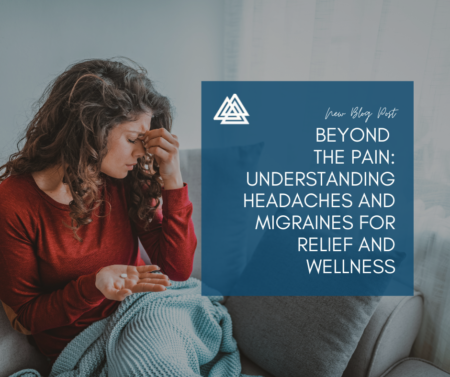 Headaches and migraines are among the most common ailments affecting people today, yet their impact on daily life can be profound. For many, these conditions are not merely occasional inconveniences but chronic issues that disrupt work, social activities, and overall well-being. To effectively manage and mitigate their effects, it’s crucial to understand the differences between headaches and migraines, their triggers, and the best strategies for relief and wellness.
Headaches and migraines are among the most common ailments affecting people today, yet their impact on daily life can be profound. For many, these conditions are not merely occasional inconveniences but chronic issues that disrupt work, social activities, and overall well-being. To effectively manage and mitigate their effects, it’s crucial to understand the differences between headaches and migraines, their triggers, and the best strategies for relief and wellness.
Distinguishing Headaches from Migraines
Headaches can range from a mild, dull ache to intense pain. They are generally categorized into several types, including tension headaches, cluster headaches, and sinus headaches. Tension headaches are the most common, often caused by stress, poor posture, or muscle strain, presenting as a constant band-like pain around the head.
Migraines, however, are more severe and complex. They are often characterized by intense, throbbing pain, usually on one side of the head, and may be accompanied by other symptoms such as nausea, vomiting, and sensitivity to light and sound. Migraines can last for hours to days and are often preceded by warning symptoms known as aura, which can include visual disturbances, tingling sensations, and difficulty speaking.
Common Triggers
Identifying and managing triggers is a critical step in controlling headaches and migraines. Common triggers include:
- Stress: Emotional stress can lead to muscle tension and headache pain.
- Dietary Factors: Certain foods and drinks, such as caffeine, alcohol, chocolate, and processed foods, can trigger migraines.
- Sleep Patterns: Both lack of sleep and oversleeping can precipitate headaches and migraines.
- Environmental Factors: Bright lights, loud noises, strong smells, and changes in weather can act as triggers.
- Hormonal Changes: Fluctuations in hormones, particularly in women, can be linked to migraine attacks.
Effective Management and Relief Strategies
- Lifestyle Adjustments:
- Stress Management: Techniques such as meditation, yoga, deep-breathing exercises, and regular physical activity can help reduce stress and prevent headaches.
- Sleep Hygiene: Establishing a consistent sleep schedule, creating a restful sleep environment, and avoiding screens before bedtime can improve sleep quality and reduce headache frequency.
- Dietary Changes: Maintaining a regular eating schedule, staying hydrated, and identifying and avoiding specific food triggers can help manage headaches and migraines.
- Medical Treatments:
- Over-the-Counter Medications: For occasional headaches, medications such as ibuprofen, acetaminophen, or aspirin can provide relief.
- Prescription Medications: For more severe or chronic cases, doctors may prescribe triptans, anti-nausea medications, or preventive treatments such as beta-blockers, antidepressants, or anti-seizure drugs.
- Botox Injections: Approved for chronic migraines, Botox injections can help reduce the frequency and severity of migraine attacks.
- Alternative Therapies:
- Acupuncture: This traditional Chinese medicine technique involves inserting thin needles into specific points on the body and has shown promise in reducing the frequency of headaches and migraines.
- Biofeedback: This mind-body technique teaches individuals how to control physiological functions, such as muscle tension and heart rate, which can help manage pain.
- Herbal Supplements: Supplements such as butterbur, feverfew, and magnesium have been studied for their potential to prevent migraines, though it’s essential to consult a healthcare provider before starting any new supplement.
The Path to Wellness
Living with headaches or migraines can be challenging, but understanding these conditions and adopting effective management strategies can lead to significant improvements in quality of life. A combination of lifestyle changes, medical treatments, and alternative therapies offers a holistic approach to prevention and relief. By taking proactive steps and working closely with healthcare professionals, individuals can move beyond the pain and towards a life of greater wellness and balance.
Whether you’re seeking to alleviate occasional headaches or manage chronic migraines, remember that you are not alone. Support networks, including healthcare providers, therapists, and patient communities, are available to help you navigate your journey to better health. Understanding your condition is the first step towards reclaiming your well-being and living a life unburdened by the constraints of pain.
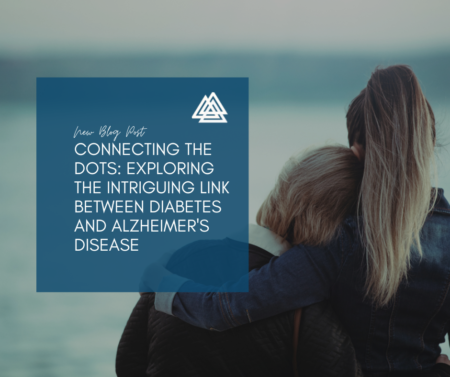 In recent years, medical research has increasingly suggested a significant connection between diabetes and Alzheimer’s disease, two of the most challenging health conditions affecting millions worldwide. While at first glance these diseases might seem unrelated—diabetes being primarily a metabolic disorder and Alzheimer’s a neurodegenerative condition—their intersection reveals fascinating insights that could pave the way for better prevention and treatment strategies.
In recent years, medical research has increasingly suggested a significant connection between diabetes and Alzheimer’s disease, two of the most challenging health conditions affecting millions worldwide. While at first glance these diseases might seem unrelated—diabetes being primarily a metabolic disorder and Alzheimer’s a neurodegenerative condition—their intersection reveals fascinating insights that could pave the way for better prevention and treatment strategies.
Understanding Diabetes and Alzheimer’s Disease
Diabetes is a chronic condition characterized by high levels of glucose in the blood. This happens either because the body cannot produce enough insulin (Type 1 diabetes) or because it cannot effectively use the insulin it produces (Type 2 diabetes). Insulin is a hormone crucial for regulating blood sugar levels, and its malfunction can lead to severe complications, including cardiovascular disease, kidney damage, and neuropathy.
Alzheimer’s disease, on the other hand, is a progressive brain disorder that leads to memory loss, cognitive decline, and ultimately, the inability to perform everyday tasks. It is the most common cause of dementia among older adults, with no current cure and limited treatment options that only temporarily alleviate symptoms.
The Emerging Connection
Recent studies have uncovered several mechanisms that might explain the link between diabetes and Alzheimer’s:
- Insulin Resistance and Brain Health: Insulin resistance, a hallmark of Type 2 diabetes, doesn’t just affect the body’s ability to manage glucose. It also impacts the brain. Insulin plays a critical role in brain function, including memory formation and synaptic health. When brain cells become insulin-resistant, their ability to communicate and maintain cognitive functions diminishes, potentially leading to Alzheimer’s.
- Inflammation: Chronic inflammation is a common thread running through both diabetes and Alzheimer’s. High blood sugar levels in diabetes cause inflammation, which can damage blood vessels and lead to cardiovascular problems. Similarly, Alzheimer’s disease is associated with neuroinflammation—an inflammatory response in the brain that contributes to neuronal damage and cognitive decline.
- Amyloid Plaques: One of the key features of Alzheimer’s disease is the accumulation of amyloid-beta plaques in the brain. Some researchers believe that high blood sugar levels and insulin resistance might accelerate the formation of these plaques, though the exact mechanisms are still under investigation.
- Vascular Damage: Diabetes is known to cause vascular damage throughout the body, including the brain. This can lead to reduced blood flow and contribute to the development of Alzheimer’s by depriving brain cells of the necessary oxygen and nutrients.
Implications for Prevention and Treatment
Understanding the link between diabetes and Alzheimer’s opens new avenues for prevention and treatment:
- Lifestyle Interventions: Emphasizing a healthy diet, regular exercise, and weight management can reduce the risk of developing both diabetes and Alzheimer’s. Diets rich in vegetables, fruits, whole grains, and lean proteins, along with low sugar intake, are particularly beneficial.
- Medications: Some diabetes medications are being explored for their potential to prevent or treat Alzheimer’s. For instance, drugs that improve insulin sensitivity might also protect against cognitive decline.
- Regular Monitoring: For people with diabetes, regular monitoring of blood sugar levels and maintaining good glycemic control are crucial. Early intervention in diabetes management might reduce the risk of developing Alzheimer’s.
The intriguing link between diabetes and Alzheimer’s disease underscores the interconnected nature of our body’s systems. By understanding how these conditions influence each other, we can develop more comprehensive strategies to combat them. Research in this area is still evolving, but it holds promise for new therapies and prevention techniques that could improve the quality of life for millions. As science continues to connect the dots, the hope is that we can turn these insights into meaningful actions that benefit individuals and communities worldwide.
 Telemedicine has revolutionized healthcare delivery in recent years, offering convenient and accessible solutions for patients and providers alike. In the field of wound care, telemedicine is increasingly being embraced as a valuable tool for remote wound assessment, monitoring, and management. As the adoption of telemedicine continues to grow, it’s essential to explore the latest trends and advancements shaping telemedicine in wound care. In this blog post, we’ll delve into some of the trending topics in wound care telemedicine, highlighting the benefits, challenges, and future implications of this innovative approach.
Telemedicine has revolutionized healthcare delivery in recent years, offering convenient and accessible solutions for patients and providers alike. In the field of wound care, telemedicine is increasingly being embraced as a valuable tool for remote wound assessment, monitoring, and management. As the adoption of telemedicine continues to grow, it’s essential to explore the latest trends and advancements shaping telemedicine in wound care. In this blog post, we’ll delve into some of the trending topics in wound care telemedicine, highlighting the benefits, challenges, and future implications of this innovative approach.
- Remote Wound Assessment and Consultation: One of the primary applications of telemedicine in wound care is remote wound assessment and consultation. Through telemedicine platforms and mobile applications, healthcare providers can conduct virtual consultations with patients, assess wound characteristics, and develop personalized treatment plans. Remote assessment allows for timely intervention and continuity of care, particularly for patients with chronic wounds or those who face barriers to accessing in-person healthcare services.
- Digital Wound Imaging and Documentation: Digital wound imaging technology enables healthcare providers to capture high-resolution images of wounds using smartphones, tablets, or specialized cameras. These images can then be securely transmitted to healthcare professionals for review and analysis. By documenting wound progression over time, digital imaging facilitates objective wound assessment, enhances communication between providers, and supports evidence-based decision-making in wound care management.
- Remote Wound Monitoring and Follow-up: Telemedicine platforms enable remote wound monitoring and follow-up, allowing healthcare providers to track wound healing progress and assess treatment efficacy without the need for in-person visits. Through video conferencing, messaging, and telemonitoring devices, patients can receive ongoing support, education, and guidance from their healthcare team, promoting adherence to treatment protocols and optimizing outcomes.
- Integration of Artificial Intelligence (AI) and Machine Learning: Advancements in artificial intelligence (AI) and machine learning are shaping the future of telemedicine in wound care. AI-powered algorithms can analyze digital wound images, identify key wound characteristics, and provide automated assessments of wound status and healing trajectory. By leveraging AI-driven decision support tools, healthcare providers can streamline wound assessment workflows, improve diagnostic accuracy, and enhance clinical decision-making in telemedicine consultations.
Telemedicine is revolutionizing wound care delivery by overcoming geographic barriers, enhancing accessibility, and improving patient outcomes. From remote wound assessment and digital imaging to telemonitoring and AI-driven decision support, there are numerous applications of telemedicine that are transforming the way wounds are managed and treated. As telemedicine continues to evolve, it’s crucial for healthcare providers to stay informed about the latest trends and advancements in telemedicine-enabled wound care, ultimately advancing the quality and efficiency of wound management for patients around the world.
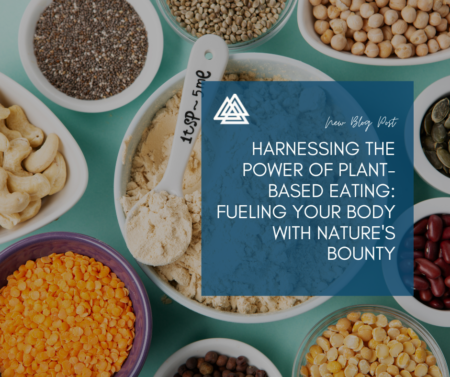 Plant-based eating has emerged as a prominent wellness trend, celebrated for its potential health benefits and positive impact on the planet. By prioritizing whole, plant-based foods and minimizing or eliminating animal products, individuals can nourish their bodies with nutrient-dense foods while supporting environmental sustainability. In this blog post, we’ll explore the principles of plant-based eating, its potential health benefits, and practical tips for adopting a plant-based lifestyle.
Plant-based eating has emerged as a prominent wellness trend, celebrated for its potential health benefits and positive impact on the planet. By prioritizing whole, plant-based foods and minimizing or eliminating animal products, individuals can nourish their bodies with nutrient-dense foods while supporting environmental sustainability. In this blog post, we’ll explore the principles of plant-based eating, its potential health benefits, and practical tips for adopting a plant-based lifestyle.
Plant-based eating involves consuming predominantly or exclusively foods derived from plants. This diet typically includes fruits, vegetables, grains, legumes, nuts, and seeds, while minimizing or entirely excluding animal products such as meat, dairy, eggs, and honey.
Here are some key aspects of plant-based eating:
-
- Fruits and Vegetables: These form the foundation of a plant-based diet, providing essential vitamins, minerals, and antioxidants.
- Whole Grains: Whole grains like quinoa, brown rice, oats, and barley are rich in fiber, complex carbohydrates, and various nutrients.
- Legumes: Beans, lentils, chickpeas, and other legumes are excellent sources of protein, fiber, and micronutrients.
- Nuts and Seeds: These are good sources of healthy fats, protein, and various nutrients. Examples include almonds, walnuts, chia seeds, and flaxseeds.
- Plant Oils: Healthy plant-based oils like olive oil, avocado oil, and coconut oil can be used for cooking and dressing.
- Plant-based Proteins: Tofu, tempeh, seitan, and plant-based meat substitutes are options for those seeking alternatives to animal protein.
- Dairy Alternatives: Milk, cheese, yogurt, and other dairy products can be replaced with plant-based alternatives such as almond milk, soy yogurt, and cashew cheese.
- Eggs and Honey Alternatives: For those following a strict plant-based diet, eggs can be substituted with products like tofu scramble or chickpea flour-based omelets. Honey can be replaced with alternatives like maple syrup, agave nectar, or date syrup.
Plant-based eating is associated with various health benefits, including reduced risk of chronic diseases such as heart disease, diabetes, and certain cancers. It is also more environmentally sustainable and ethical compared to diets high in animal products, as it requires fewer resources and reduces greenhouse gas emissions.
However, it’s essential to ensure a well-balanced diet when adopting a plant-based lifestyle to meet all nutritional needs, including protein, iron, calcium, vitamin B12, and omega-3 fatty acids. Consulting with a healthcare professional or registered dietitian can help individuals plan a nutritionally adequate plant-based diet.
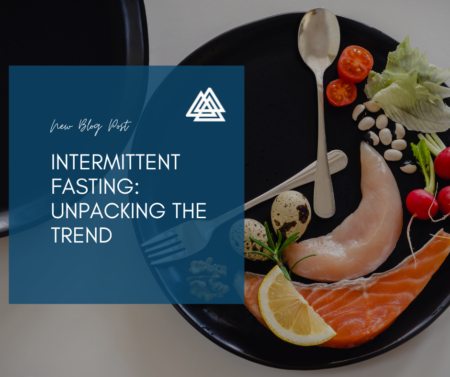 In recent years, intermittent fasting has gained traction as a popular approach to weight loss and improved health. With numerous purported benefits, including weight management, improved metabolic health, and potential longevity, it’s no wonder why this eating pattern has garnered attention. In this blog post, we’ll explore the science behind intermittent fasting, its potential benefits and drawbacks, and how to incorporate it into your lifestyle safely.
In recent years, intermittent fasting has gained traction as a popular approach to weight loss and improved health. With numerous purported benefits, including weight management, improved metabolic health, and potential longevity, it’s no wonder why this eating pattern has garnered attention. In this blog post, we’ll explore the science behind intermittent fasting, its potential benefits and drawbacks, and how to incorporate it into your lifestyle safely.
Understanding Intermittent Fasting: Explaining the concept of intermittent fasting and the various fasting protocols, such as the 16/8 method, 5:2 diet, and alternate-day fasting.
- 16/8 Method: This is one of the most popular forms of intermittent fasting. It involves fasting for 16 hours each day and restricting your daily eating window to 8 hours. For example, you might eat your meals between 12 pm and 8 pm and fast for the remaining 16 hours until noon the next day.
- 5:2 Diet: In this approach, you eat normally for five days of the week and restrict calorie intake to about 500-600 calories for two non-consecutive days. On fasting days, it’s recommended to spread out your calorie intake throughout the day.
- Alternate-Day Fasting: As the name suggests, with this method, you alternate between days of normal eating and fasting. On fasting days, you may either consume no calories or significantly restrict calorie intake (e.g., consuming only 500 calories). On non-fasting days, you eat as you normally would.
- Eat-Stop-Eat: This approach involves fasting for a full 24 hours once or twice a week. For example, you might finish dinner at 7 pm one day and then not eat again until 7 pm the following day.
- Warrior Diet: This method involves fasting during the day and consuming one large meal at night. The fasting period typically lasts for 20 hours, followed by a 4-hour eating window in the evening.
Intermittent fasting has gained popularity in recent years, and research suggests it may offer several potential health benefits:
- Weight Loss: Intermittent fasting can help reduce calorie intake and promote weight loss by creating a calorie deficit. During fasting periods, the body taps into stored fat for energy, leading to fat loss.
- Improved Metabolic Health: Intermittent fasting may improve various markers of metabolic health, including insulin sensitivity, blood sugar levels, and cholesterol levels. It can help lower insulin levels, reduce inflammation, and regulate blood lipid profiles.
- Enhanced Brain Function: Some studies suggest that intermittent fasting may have neuroprotective effects and support brain health. It may promote the production of brain-derived neurotrophic factor (BDNF), a protein that plays a role in cognitive function, learning, and memory.
- Increased Autophagy: Autophagy is a cellular process that removes damaged or dysfunctional components, helping to maintain cellular health and prevent diseases. Intermittent fasting can stimulate autophagy, potentially reducing the risk of age-related diseases and promoting longevity.
- Cardiovascular Health: Intermittent fasting may benefit cardiovascular health by improving blood pressure, reducing inflammation, and lowering levels of risk factors such as LDL cholesterol and triglycerides. These effects may contribute to a lower risk of heart disease.
- Longevity: Some animal studies have suggested that intermittent fasting may extend lifespan by activating cellular repair mechanisms, reducing oxidative stress, and improving metabolic health. While more research is needed in humans, these findings are promising.
- Potential Cancer Protection: Some research indicates that intermittent fasting may have anti-cancer effects by inhibiting tumor growth, enhancing the body’s ability to repair DNA damage, and reducing inflammation. However, more studies are needed to confirm these effects in humans.
- Simplicity and Convenience: Intermittent fasting can be relatively simple to implement and may offer convenience by reducing the need for frequent meal planning and preparation. Many people find it easier to stick to than traditional calorie-restricted diets.
It’s important to note that while intermittent fasting shows promise for improving health outcomes, individual results may vary, and more research is needed to fully understand its long-term effects. Additionally, intermittent fasting may not be suitable for everyone, particularly those with certain medical conditions or specific dietary needs. Consulting with a healthcare professional before starting any fasting regimen is recommended.
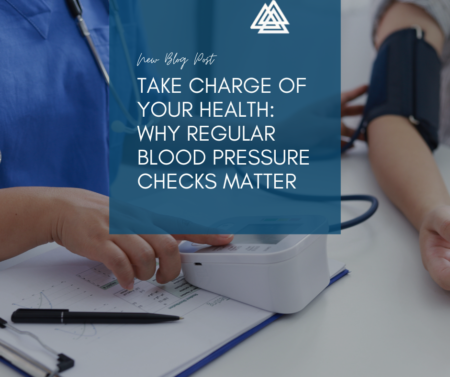 May 17 marks World Hypertension Day, an important global initiative aimed at raising awareness about high blood pressure and its impact on health. As one of the leading risk factors for cardiovascular disease, hypertension often goes unnoticed until it leads to serious complications. In this blog post, we’ll delve into the importance of regular blood pressure checks, why raised blood pressure is dangerous, and how you can take steps to control it and safeguard your health.
May 17 marks World Hypertension Day, an important global initiative aimed at raising awareness about high blood pressure and its impact on health. As one of the leading risk factors for cardiovascular disease, hypertension often goes unnoticed until it leads to serious complications. In this blog post, we’ll delve into the importance of regular blood pressure checks, why raised blood pressure is dangerous, and how you can take steps to control it and safeguard your health.
Regular blood pressure checks are essential for monitoring your cardiovascular health and detecting potential issues early. Blood pressure is a key indicator of heart health, reflecting the force of blood against the walls of your arteries as your heart pumps it around your body. Elevated blood pressure, if left untreated, can increase the risk of heart disease, stroke, kidney disease, and other serious health conditions.
Why Raised Blood Pressure is Dangerous:
- Increased Risk of Heart Disease and Stroke: High blood pressure puts added strain on the heart and blood vessels, increasing the risk of heart disease and stroke. Over time, elevated blood pressure can damage the arteries, leading to atherosclerosis (hardening of the arteries) and narrowing of blood vessels, which can impede blood flow to vital organs.
- Kidney Damage: The kidneys play a crucial role in regulating blood pressure by filtering waste and excess fluid from the blood. Chronic hypertension can damage the kidneys’ blood vessels and impair their function, potentially leading to kidney disease or failure.
- Vision Problems: High blood pressure can damage the blood vessels in the eyes, leading to vision problems or even vision loss. Hypertensive retinopathy is a condition characterized by damage to the retina caused by elevated blood pressure, which can result in blurred vision or vision changes.
Taking Steps to Control High Blood Pressure:
- Monitor Your Blood Pressure Regularly: Check your blood pressure regularly, either at home with a home blood pressure monitor or at a healthcare provider’s office. Aim to monitor your blood pressure at least once a month or as recommended by your healthcare provider.
- Maintain a Healthy Lifestyle: Adopting healthy lifestyle habits can help control high blood pressure and reduce the risk of complications. Focus on:
- Eating a balanced diet rich in fruits, vegetables, whole grains, and lean proteins.
- Limiting salt intake and avoiding high-sodium processed foods.
- Engaging in regular physical activity, such as brisk walking, swimming, or cycling.
- Managing stress through relaxation techniques, meditation, or hobbies.
- Take Medications as Prescribed: If lifestyle changes alone are not sufficient to control your blood pressure, your healthcare provider may prescribe medications to help lower it. It’s essential to take medications as prescribed and attend regular follow-up appointments to monitor your progress and adjust treatment as needed.
On World Hypertension Day and beyond, prioritize your cardiovascular health by checking your blood pressure regularly and taking steps to control elevated blood pressure. By staying proactive and informed, you can reduce your risk of heart disease, stroke, and other complications associated with hypertension. Remember, small lifestyle changes can make a big difference in managing your blood pressure and promoting overall well-being. Take charge of your health today for a healthier tomorrow.
 Women’s Health Care Month is a time to celebrate and prioritize the well-being of women around the world. From reproductive health to mental wellness, this month provides an opportunity to raise awareness about the unique health needs of women and promote access to comprehensive healthcare services. As we commemorate Women’s Health Care Month, let’s explore the importance of prioritizing women’s health and empowering women to take charge of their wellness journey.
Women’s Health Care Month is a time to celebrate and prioritize the well-being of women around the world. From reproductive health to mental wellness, this month provides an opportunity to raise awareness about the unique health needs of women and promote access to comprehensive healthcare services. As we commemorate Women’s Health Care Month, let’s explore the importance of prioritizing women’s health and empowering women to take charge of their wellness journey.
Education is key to empowering women to make informed decisions about their health. Women’s Health Care Month serves as a platform to disseminate vital information about preventive screenings, reproductive health, mental wellness, and other aspects of women’s health. By providing accessible resources and promoting health literacy, we can empower women to advocate for their own well-being and engage in proactive health management.
Preventive care plays a crucial role in maintaining women’s health and detecting potential health issues early. Regular screenings for breast cancer, cervical cancer, osteoporosis, and other conditions are essential for early detection and intervention. Women’s Health Care Month encourages women to prioritize preventive care by scheduling routine check-ups, screenings, and vaccinations to safeguard their health and well-being.
Reproductive health is a fundamental component of women’s overall health and wellness. Women’s Health Care Month highlights the importance of access to comprehensive reproductive healthcare services, including family planning, prenatal care, and reproductive counseling. By advocating for reproductive rights and destigmatizing conversations about reproductive health, we can ensure that women have the resources and support they need to make informed choices about their bodies and reproductive futures.
Mental health is an integral part of women’s overall well-being, yet it is often overlooked or stigmatized. Women’s Health Care Month emphasizes the importance of prioritizing mental wellness and seeking support when needed. From stress management techniques to therapy and support groups, there are various resources available to support women’s mental health. By promoting open dialogue, reducing stigma, and increasing access to mental health services, we can empower women to prioritize their emotional well-being.
Women’s Health Care Month also serves as a call to action to address disparities in healthcare access and outcomes. Women from marginalized communities, including women of color, LGBTQ+ individuals, and those with disabilities, often face barriers to accessing quality healthcare services. By advocating for equity, inclusivity, and culturally competent care, we can work towards a healthcare system that meets the diverse needs of all women and ensures equitable access to care.
As we celebrate Women’s Health Care Month, let’s commit to prioritizing the health and well-being of women everywhere. By empowering women through education, promoting preventive care, addressing reproductive health needs, fostering mental wellness, and advocating for equity and access, we can create a world where all women have the resources and support they need to thrive. Together, let’s champion women’s health and work towards a future where every woman can lead a healthy, fulfilling life.
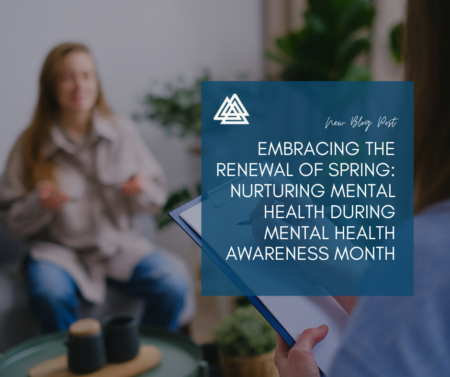 As the vibrant colors of spring bloom around us, there’s a palpable sense of renewal and rejuvenation in the air. It’s no coincidence that Mental Health Awareness Month coincides with this season of growth and transformation. Spring offers a unique opportunity to harness its positive influence on mental well-being, fostering hope, resilience, and a renewed sense of purpose. Let’s explore the ways in which spring can have a positive impact on our mental health and how we can embrace its transformative energy during this crucial month of awareness.
As the vibrant colors of spring bloom around us, there’s a palpable sense of renewal and rejuvenation in the air. It’s no coincidence that Mental Health Awareness Month coincides with this season of growth and transformation. Spring offers a unique opportunity to harness its positive influence on mental well-being, fostering hope, resilience, and a renewed sense of purpose. Let’s explore the ways in which spring can have a positive impact on our mental health and how we can embrace its transformative energy during this crucial month of awareness.
Springtime beckons us outdoors, inviting us to bask in the warmth of the sun, breathe in the crisp air, and revel in the beauty of blooming flowers and budding trees. Nature has long been recognized for its therapeutic effects on mental health, offering a sanctuary for relaxation, reflection, and rejuvenation. Here’s how immersing ourselves in nature during spring can benefit our mental well-being:
- Stress Reduction: Spending time in natural settings can lower cortisol levels, reduce stress, and promote feelings of calm and relaxation.
- Mood Enhancement: Exposure to sunlight and fresh air boosts serotonin levels, enhancing mood and combating symptoms of depression and anxiety.
- Mindfulness and Presence: Engaging in outdoor activities such as walking, gardening, or simply sitting in nature encourages mindfulness and presence, fostering a sense of groundedness and inner peace.
By embracing nature’s healing embrace, we can tap into its restorative power and nurture our mental health amidst life’s challenges.
Spring symbolizes a season of growth, renewal, and transformation. Just as the natural world awakens from its winter slumber, so too can we cultivate new beginnings and positive changes in our lives. Here are some ways to embrace the spirit of growth and transformation during Mental Health Awareness Month:
- Set Intentions: Take this opportunity to reflect on your goals, aspirations, and areas of personal growth. Set intentions for the month ahead, focusing on self-care, self-discovery, and self-improvement.
- Cultivate Gratitude: Practice gratitude for the blessings in your life, big and small. Take time to appreciate the beauty of spring and the opportunities it brings for growth and renewal.
- Explore New Hobbies: Spring offers a perfect time to explore new interests and hobbies. Whether it’s gardening, painting, or hiking, embrace activities that bring you joy and fulfillment.
- Connect with Others: Reach out to friends, family, or support groups for connection and camaraderie. Share your experiences, struggles, and triumphs, knowing that you’re not alone on your journey.
By embracing the transformative energy of spring, we can embark on a path of personal growth, healing, and renewal during Mental Health Awareness Month and beyond.
As we celebrate Mental Health Awareness Month amidst the blossoming beauty of spring, let’s seize the opportunity to nurture our mental well-being and embrace the spirit of renewal and transformation. By immersing ourselves in nature’s healing embrace, setting intentions for growth, and fostering connections with others, we can cultivate resilience, hope, and a renewed sense of purpose. Let’s harness the transformative power of spring to uplift our spirits, inspire positive change, and prioritize our mental health and wellness.
